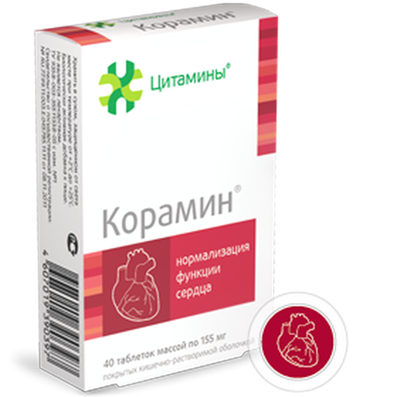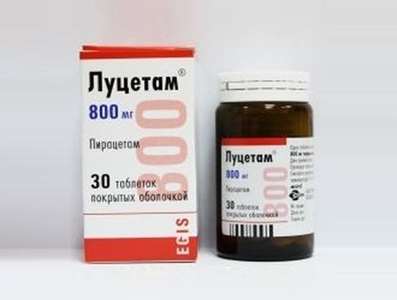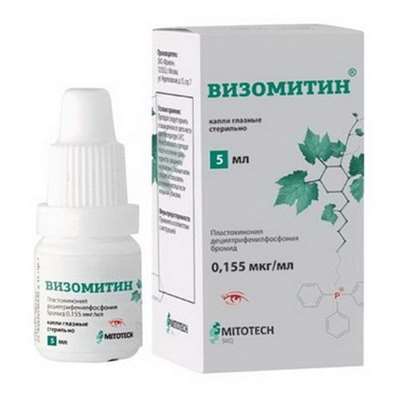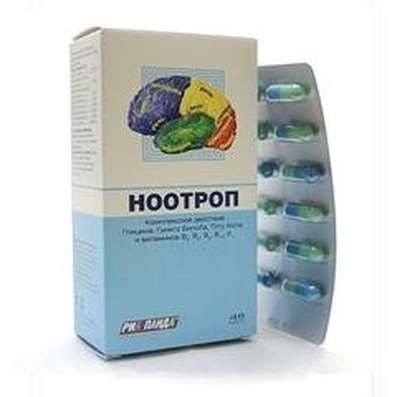Instruction for use: Chlordiazepoxide
I want this, give me price
The Latin name of the substance Chlordiazepoxide
Chlordiazepoxydum (genus. Chlordiazepoxydi)
Chemical name
7-Chloro-N-methyl-5-phenyl-3H-1,4-benzodiazepine-2-amino-4-oxide (as hydrochloride)
Gross formula
C16H14ClN3O
Pharmacological group:
Anxiolytics
The nosological classification (ICD-10)
F07 Personality and behavioral disorders due to illness, brain damage or dysfunction: Fourier disease
F10.3 Abstinence: Alcohol withdrawal syndrome; Abstinence syndrome; Abstinence syndrome with alcoholism; Abstinence; Alcohol abstinence; Alcohol withdrawal status; Alcohol withdrawal syndrome; Postabstinctive disorder; Post-abstinence condition; Hangover syndrome; Abstinence syndrome; Alcohol abstinence syndrome; Alcohol withdrawal syndrome; Abstinence condition
F10.4 Abstinent state with delirium: Alcoholic delirium; White fever alcoholic; Delirium; Delirious condition with alcoholism and drug addiction
F10.5 Alcoholic alcohol: Alcoholic hallucinations; Psycho-organic syndrome in chronic alcoholism; Alcoholic psychosis; White fever alcoholic; Delirium; Delirium with alcoholism; Acute alcoholic psychosis; Delirious condition with alcoholism and drug addiction; Acute alcoholic psychosis with autonomic disorders
F11 Mental and behavioral disorders due to use of opioids: heroin addiction; heroin addiction; Diagnosis of opioid dependence; Dependence on opioids; morphine withdrawal; Opiate withdrawal; opium addiction; Opioid dependence; Opioid addiction; Behavioral disorder and postabstinentnom for drug dependence
F20 Schizophrenia: Schizophrenic conditions; Exacerbation of schizophrenia; Schizophrenia; Chronic schizophrenia; Dementia praecox; Bleuler's disease; Psychotic discordant; Dementia early; The febrile form of schizophrenia; Chronic schizophrenic disorder; Psychosis of the schizophrenic type; Acute form of schizophrenia; Acute schizophrenic disorder; Cerebral Organic Insufficiency in Schizophrenia; Acute attack of schizophrenia; Schizophrenic psychosis; Acute schizophrenia; Sluggish schizophrenia; Sluggish schizophrenia with apathoabulic disorders; Acute stage of schizophrenia with excitation
F32 Depressive episode: Adynamic subdepression; Astheno-adynamic subdepressive states; Asthenodepressive disorder; Astheno-depressive disorder; Asthenodepressive state; Astheno-depressive state; Major Depressive Disorder; Vyaloapatichesky depression with retardation; Double depression; Depressive pseudodement; Depressive illness; Depressive mood disorder; Depressive disorder; Depressive mood disorder; Depressive state; Depressive disorders; Depressive syndrome; Depressive syndrome larviated; Depressive syndrome with psychoses; Depressed masks; Depression; Depression Depletion; Depression with the phenomena of inhibition within the framework of cyclothymia; Depression is smiling; Involutional depression; Involutionary melancholy; Involutional depression; Manic-depressive disorder; Masked Depression; Melancholic Attack; Neurotic depression; Neurotic depression; Shallow Depression; Organic depression; Organic depressive syndrome; Simple depression; Simple melancholic syndrome; Psychogenic depression; Reactive depression; Reactive depression with moderate psychopathological symptoms; Reactive depressive states; Reactive depression; Recurrent depression; Seasonal depressive syndrome; Severostatic depression; Senile Depression; Senile Depression; Symptomatic Depression; Somatogenic depression; Cyclotymic depression; Exogenous Depression; Endogenous depression; Endogenous Depressive Conditions; Endogenous Depression; Endogenous depressive syndrome
F40.0 Agoraphobia: Fear of open space; Fear of being in a crowd
F41.1 Generalized anxiety disorder: Generalized anxiety disorders; Generalized alarm; Phobic neurosis; Anxiety reaction; Anxious neurosis
F42 Obsessive-compulsive disorder: Obsessive-compulsive syndrome; Obsessive compulsive states; Obsessive-compulsive syndrome; The obsession syndrome; The obsession neurosis; Obsessive-compulsive neurosis; Obsessions
F44 Dissociative [conversion] disorders: Psychogenic psychosis; Conversion disorder; Dissociative phenomena; Pseudodegmentation; Conversion symptoms
F45 Somatoform disorders: Psychosomatic disorder; Psychosomatic disorders; Psychosomatic diseases; The state of excitement in somatic diseases; Functional psychosomatic disorders of the cardiovascular system
F51.0 Insomnia of inorganic etiology: Situational insomnia; Situational sleep disorders
G44.2 Headache of intense type: Tension headache; Tension headaches; Headache of neurogenic origin; The Barre-Liège syndrome; Cervical migraine; Psychogenic headache
G47.0 Disorders of falling asleep and maintaining sleep [insomnia]: Insomnia; Insomnia, especially difficulty falling asleep; desynchronosis; Prolonged sleep disturbance; Difficulty falling asleep; Short-term and transient insomnia; Short-term and chronic sleep disorders; Short or shallow sleep; Violation of sleep; Disturbed sleep, especially in the phase of falling asleep; Infringements sleep; sleep disturbances; Neurotic sleep disturbance; Shallow superficial sleep; shallow sleep; Poor quality of sleep; Night awakening; sleep Pathology; Postsomnic violation; transient insomnia; Trouble falling asleep; Early awakening; Early morning awakening; Early awakening; sleep disorder; somnipathy; persistent insomnia; difficult to fall asleep; difficulty falling asleep; Difficulty falling asleep in children; persistent insomnia; Worsening sleep; Chronic insomnia; Frequent night and / or early morning awakening; Frequent nocturnal awakening and a sense of the depth of the non-sleep; Night waking
G56.4 The causalgia: causalgic syndrome; Syndrome of causalgia
L29 Itching: Itching with partial obstruction of the biliary tract; Dermatitis itchy; Dermatosis with persistent itching; Other itching dermatoses; Itching dermatoses; Itching allergic dermatosis; Itching dermatitis; Itching dermatosis; Itching itch; Excruciating itching; Severe itching; Endogenous itching; Skin itching with dermatosis; Restricted itchy dermatitis; Itching of the skin; Itchy scalp; Itching eczema
N50.8.0 * Menopause in men: Vascular complications of menopause; Menopause; Sexual weakness in elderly men; Climax; Men's Men's Climax; Male menopause; Pathological menopause; Premature menopause; Menopausal disorders in men; Disorders in menopause; Menopausal Symptom Complex
N94.3 Premenstrual tension syndrome: Pronounced premenstrual syndrome; Menstrual psychosomatic disorder; Menstrual syndrome; Premenstrual tension; Premenstrual status; Premenstrual period; Premenstrual syndrome; Menstruation syndrome
N95.1 menopausal and menopausal status of women: Atrophy of the mucosa of the lower genital tract, caused by estrogen deficiency; Vaginal dryness; Autonomic dysfunction in women; gipoestrogeniya state; Deficiency of estrogen in menopausal women; Degenerative changes of the mucous membrane in the menopause; Natural menopause; an intact uterus; climacteric; Menopause women; Menopause in women; menopausal depression; Climacteric ovarian dysfunction; Menopause; Climacteric neurosis; Menopause; Menopausal symptoms complicated psychovegetative; Climacteric syndrome; Climacteric vegetative disorders; Climacteric psychosomatic disorder; menopausal disorders; Menopausal disorders in women; menopausal condition; Climacteric vascular disorders; Menopause; Menopausal vasomotor symptoms; menopausal period; Lack of estrogen; Feeling the heat; Pathological menopause; perimenopause; menopause; postmenopausal; Premature menopause; premenopauznom period; tides; hot flashes; flushing in the Meno and postmenopausal; Hot flashes / hot flashes in menopause; Heart attack during menopause; Early menopause in women; Disorders of menopause; climacteric syndrome; Vascular complications of menopause; Physiological menopause; Estrogendefitsitnye state; premature Menopause
R06.6 Hiccups
R07.2 Pain in the heart: neuroses of the heart; Myocardial ischemic pain; Pain syndrome in myocardial infarction; cardialgia; cardioneurosis; Cardiac syndrome; Pain in cardiac patients; Cardialgia on background dyshormonal myocardial dystrophy; Functional cardialgia; Psevdostenokardiya; pericardial pain
R25.2 Cramp and spasm: Muscle spasms in tetanus; Pain syndrome with smooth muscle spasms; Pain syndrome with smooth muscle spasms (renal and biliary colic, intestinal spasm, dysmenorrhea); Pain syndrome with spasms of smooth muscles of internal organs; Pain syndrome with spasms of smooth muscles of internal organs (renal and biliary colic, intestinal spasm, dysmenorrhea); Painful muscular spasm; Mimic spasms; Muscular spasticity; Muscle spasms; Muscular spasms of central origin; Muscular spasticity; Muscle spasm; Neurological contractures with spasms; Night cramps in the extremities; Nocturnal cramps in the legs; Night cramps calf muscles; Symptomatic convulsive state; Vesta Syndrome; Spasm of smooth muscles; Spasm of smooth vascular musculature; Spasm of muscles; Spasm of striated muscle due to organic diseases of the central nervous system; Skeletal muscle spasms; Spasms of smooth muscles of internal organs; Skeletal Muscle Cramps; Spastic states of striated musculature; Spasmodic pain syndrome; The spastic condition of smooth muscles; Spasticity of skeletal musculature; Muscle cramp; Convulsions; Cramps of the calf muscles; Convulsions of central origin; Convulsive condition; Convulsive Syndrome; Convulsive status in children; Tonic convulsions; Cerebral spasmodic syndrome; clasp knife phenomenon
R25.8.0 * Hyperkinesis: Hyperkinesis of the Choreic; Hyperkinesis of central origin; Hyperkinesia rheumatic; Hyperkinesis; Floating tremor
R45.1 Anxiety and agitation: Agitation; Anxiety; Explosive excitability; Internal stimulation; Excitability; Excitation; Excitation acute; Psychomotor agitation; Hyperexcitability; Motor excitement; Cessation of psychomotor agitation; Nervous excitement; Restlessness; Night trouble; Acute stage of schizophrenia with excitation; Acute mental agitation; Paroxysm of excitation; Overexcitation; Increased excitability; Increased nervous excitability; Increased emotional and cardiac excitability; Increased agitation; Mental arousal; Psychomotor agitation; Psychomotor agitation in psychoses; Psychomotor agitation of an epileptic nature; Psychomotor paroxysm; Psychomotor fit; Symptoms of excitation; Symptoms of psychomotor agitation; The state of agitation; A state of anxiety; Excitation status; A state of heightened concern; The state of psychomotor agitation; Conditions of anxiety; Excitation conditions; The state of excitement in somatic diseases; Excitation level; Feelings of anxiety; Emotional arousal
R45.4 Irritability and anger: Neurosis with increased irritability; Outbursts of anger; Anger; Resentment; Increased irritability; Increased irritability of the nervous system; Irritability; Irritability in neuroses; Irritability in psychopathic disorders; Symptoms of irritability; Dysphoria
Z100 * CLASS XXII Surgical practice: Abdominal surgery; adenomectomy; Amputation; Coronary angioplasty; Angioplasty of the carotid arteries; Antiseptic skin treatment for wounds; Antiseptic Hand; Appendectomy; atherectomy; Balloon coronary angioplasty; Vaginal hysterectomy; The coronary bypass; Interventions in the vagina and cervix; Interventions on the bladder; Intervention in the mouth; Restoration and reconstructive surgery; Hand hygiene of medical personnel; Gynecologic surgery; Gynecological intervention; Gynecological surgery; Hypovolemic shock during operations; Disinfection of purulent wounds; Disinfection of wounds edges; Diagnostic intervention; Diagnostic procedures; Cervical Diathermocoagulation; Long-surgery; Replacing the fistula catheters; Infection in orthopedic surgery; Artificial heart valve; cystectomy; Short-term outpatient surgery; Short-term operation; Short surgical procedures; Krikotireotomiya; Blood loss during surgery; Bleeding during surgery and in the postoperative period; Kuldotsentez; laser photocoagulation; laser coagulation; retinal laser coagulation; Laparoscopy; Laparoscopy in Gynecology; CSF fistula; Small gynecological operations; Small surgical procedures; Mastectomy and subsequent plastic; mediastinotomy; Microsurgical operations on the ear; Mukogingivalnye operation; suturing; Minor surgery; neurosurgical operation; Immobilization of the eyeball in ophthalmic surgery; testectomy; pancreatectomy; Perikardektomiya; The period of rehabilitation after surgery; The period of convalescence after surgery; Percutaneous transluminal coronary angioplasty; Pleural thoracentesis; Pneumonia postoperative and posttraumatic; Preparation for surgical procedures; Preparation for surgery; Preparation of the surgeon's hands before surgery; Preparation of the colon for surgical procedures; Postoperative aspiration pneumonia in neurosurgical and thoracic surgery; Postoperative nausea; Postoperative bleeding; postoperative granuloma; postoperative shock; The early postoperative period; myocardial revascularization; Radiectomy; gastric Resection; bowel resection; uterine Resection; liver Resection; enterectomy; Resection of part of the stomach; Reocclusion of the operated vessel; Bonding tissues during surgical procedures; Removal of sutures; Condition after eye surgery; Condition after surgery; Condition after surgery in the nasal cavity; Condition after gastrectomy; Status after resection of the small intestine; Condition after tonsillectomy; Condition after removal of the duodenum; Condition after phlebectomy; Vascular surgery; Splenectomy; Sterilization of surgical instruments; Sterilization of surgical instruments; sternotomy; Dental surgery; Dental intervention in periodontal tissues; strumectomy; Tonsillectomy; Thoracic surgery; Thoracic surgery; total gastrectomy; Transdermal intravascular coronary angioplasty; Transurethral resection; Turbinektomiya; Removal of a tooth; cataract surgery; Removal of cysts; tonsillectomy; Removal of fibroids; Removing the mobile primary teeth; Removing polyps; Removing broken tooth; Removal of the uterus body; Removal of sutures; Fistula likvoroprovodyaschih ways; Frontoetmoidogaymorotomiya; Surgical infection; Surgical treatment of chronic limb ulcers; Surgery; The surgery in the anal area; The surgery on the colon; Surgical practice; The surgical procedure; Surgical interventions; Surgery on the gastrointestinal tract; Surgical procedures on the urinary tract; Surgical procedures on the urinary system; Surgical intervention of the genitourinary system; Surgical procedures on the heart; Surgical manipulation; surgery; Surgery on the veins; Surgical intervention; Vascular surgery; Surgical treatment of thrombosis; Surgery; cholecystectomy; Partial gastric resection; hysterectomy; Percutaneous transluminal coronary angioplasty; Percutaneous transluminal angioplasty; Coronary artery bypass; tooth Extirpation; Extirpation of milk teeth; pulpectomy; pulsative cardiopulmonary bypass; tooth Extraction; teeth Extraction; cataract extraction; Electrocoagulation; endourological intervention; episiotomy; Etmoidotomiya; Complications after tooth extraction
Z54.0 Recovery period after surgical intervention: Conditions after neurosurgical operations; Conditions after removal of gallstones; Conditions after surgery; Restorative period after surgical interventions; Recovery period after operations; The rehabilitation period after surgical interventions; The rehabilitation period after surgical operations; Reconvalence after surgery; Reconvalence after surgical intervention; Reconvalescence in the postoperative period; Recovery period after surgery in front of eyes; Period after hemorrhoidectomy; Postoperative period; Period of postoperative rehabilitation; The rehabilitation period after injuries
CAS Code
58-25-3
Characteristics of the substance Chlordiazepoxide
Anxiolytic, benzodiazepine derivative.
White or light yellow fine crystalline powder. Almost nerastvorim in water, it is difficult soluble in alcohol; in the form of hydrochloride - soluble in water.
Pharmacology
Pharmacological action - anxiolytic, miorelaxing, central, sleeping, sedative.
Interacts with specific benzodiazepine receptors located in the post-synaptic GABAA receptor complex in the cerebral cortex, almond-shaped nucleus, hippocampus, the hypothalamus, cerebellum, striatum and spinal cord. Increases the sensitivity of neuronal GABA receptors to GABA, enhances GABA neurotransmission, blocks polysynaptic reflexes.
After oral administration, it is well absorbed from the digestive tract (food slows down absorption); Cmax when administered to a single dose is achieved after 0.5-4 h, the equilibrium concentration in the blood is reached after 5-12 days after the start of admission. Binding to plasma proteins is 96%. T1 / 2 of chlordiazepoxide from plasma is 7-28 h, Cmax of the main metabolite (desmethylchlorodiazepoxide) is 8-24 h. In the liver it is subjected to intensive metabolism (N-demethylation, deamination, hydroxylation) to form active derivatives (desmethylchlorodiazepoxide, demoxepam, desmethyldiazepam, oxazepam ). Passes through GEB, placenta, penetrates into breast milk; is slowly absorbed from the muscle tissue. After the end of treatment, metabolites are detected in the plasma for several days or even weeks. T1 / 2 - 5-30 h (chlordiazepoxide), 18 h (desmethylchlorodiazepoxide), 14-95 h (demexepam), 30-100 h (desmethyldiazepam), 5-15 h (oxazepam). It is excreted mainly by the kidneys (1-2% unchanged). The accumulation of chlordiazepoxide and its active metabolites with repeated application is considerable.
In the elderly, the absorption and metabolism of chlordiazepoxide proceed more slowly, the metabolic transformations slow down considerably when the liver is damaged.
Has a pronounced soothing effect on the central nervous system. Suppresses anxiety, excitement, emotional tension. Relieves obsessive thoughts and fears, increases susceptibility to hypnosuggestive therapy. Has an anti-panic effect, removes tremor, has a weak anticonvulsant effect. Reduces the severity of anxiety and fear associated with the upcoming surgical intervention.
In large doses can reduce psychomotor agitation. It shows a mild hypnotic effect, which is usually expressed in the first 3-5 days of therapy, in the future a positive effect on sleep is due to the elimination of various psychogenic stimuli. Causes mild muscle relaxation.
It alleviates the symptoms of acute alcohol withdrawal, such as agitation, nervous tension, anxiety anxiety, tremor, etc. Increases appetite, has a mild analgesic effect.
A study of reproduction in animals showed that the administration of chlordiazepoxide to rats at doses of 10, 20 and 80 mg / kg / day did not cause congenital malformations and neonatal growth disorders, as well as lactation in females. In another study, when doses of 100 mg / kg / day were administered, a significant reduction in the fertilization rate was observed, a marked decrease in survival and body weight in newborn rats.
Application of the substance Chlordiazepoxide
Neurotic conditions accompanied by anxiety, excitement, increased irritability, emotional stress, insomnia; neurotic ataxia, tension headache, cardialgia, esophagospasm, causalgia, facial hemispasm, hysterical conditions (hysterical fit, amblyopia, mutism, paralysis), psychogenic stupor, hiccough; neurotic and psychopathic disorders in patients with atherosclerosis of cerebral vessels, organic brain damage; infectious delirium, withdrawal syndrome in patients with alcoholism and drug addiction; increased tone of skeletal muscles, hyperkinesia rheumatic and neurotic; menopause, premenstrual syndrome, vegetative-vascular dystonia; premedication (preparation of patients for operations and long-term diagnostic procedures), postoperative period; complex therapy for schizophrenia with neurosis-like symptoms, as well as for diseases accompanied by itching, irritability, insomnia, incl. eczema.
Contraindications
Hypersensitivity, severe myasthenia gravis, respiratory depression, angle-closure glaucoma, acute liver and / or kidney disease, pregnancy (I trimester), breast-feeding, age 4 years.
Restrictions on the use
Glaucoma, impaired liver and / or kidney function, sleep apnea syndrome, severe cardiac and respiratory failure, ataxia (except neurotic), psychoses (possibly paradoxical enhancement of symptoms), drug or alcohol dependence (with the exception of acute withdrawal syndrome), pregnancy II and III trimester), the elderly.
Application in pregnancy and lactation
Contraindicated in the first trimester of pregnancy (increases the risk of congenital malformations during appointment in this period). In the second and third trimester of pregnancy is possible, if the expected effect of therapy exceeds the potential risk to the fetus. For the duration of treatment, breastfeeding should be stopped.
Side effects of the substance Chlordiazepoxide
From the nervous system and sense organs: drowsiness, lethargy, memory impairment and concentration of attention, slowing of mental and motor reactions, muscle weakness, gait disturbance, ataxia, confusion, disorientation, dizziness, headache, EEG changes.
From the cardiovascular system and blood (hematopoiesis, hemostasis): tachycardia, palpitation, arterial hypotension (with high doses), thrombocytopenia, agranulocytosis.
On the part of the intestine: dry mouth, nausea, constipation or diarrhea, intestinal colic, a violation of the liver, icterus of the skin.
Allergic reactions: skin rash, itching, scaling of the skin.
Other: difficulty breathing, urinary retention, menstrual irregularity, changes in libido (increase or decrease).
Possible addiction, drug dependence, withdrawal syndrome, etc. (see "Precautions").
Interaction
Strengthens the effect of alcohol and drugs that depress the central nervous system (narcotic analgesics, anesthetic, hypnotics, neuroleptics with pronounced sedative effect), muscle relaxants, etc. Antacid agents slow the absorption (but not reduce the absorption) of chlordiazepoxide. Chlordiazepoxide can reduce the effect of levodopa. Cimetidine, estrogen-containing oral contraceptives, disulfiram and erythromycin slow the metabolism of chlordiazepoxide in the liver, increase its concentration in the blood and delay excretion. Smoking can weaken the action of chlordiazepoxide.
Overdose
Symptoms: depression of the central nervous system of varying degrees of severity (from drowsiness to coma) - pronounced drowsiness, lethargy, weakness, decreased muscle tone, prolonged confusion, disorientation, indiscriminate speech, oppression of reflexes, coma; respiratory depression and hypotension are also possible.
Treatment: induction of vomiting, immediate gastric lavage, monitoring of vital functions, symptomatic therapy, intravenous infusion of solutions (to enhance diuresis), ensuring adequate ventilation of the lungs; in the case of hypotension, the administration of norepinephrine. When developing excitation, barbiturates should not be used. As a specific antidote, a benzodiazepine receptor antagonist, flumazenil (in a hospital setting) is used. Hemodialysis is ineffective.
Routes of administration
Inside.
Precautions for the substance Chlordiazepoxide
It should be noted that when combining anxiety with depression, suicidal attempts are possible.
Use with caution at the same time as other psychotropic drugs. Do not administer simultaneously with MAO inhibitors and phenothiazines.
With prolonged use (for several months), especially in high doses, addiction and drug dependence are possible. The abolition of chlordiazepoxide should be carried out gradually, by lowering the dose to reduce the risk of withdrawal syndrome characterized by tremors, seizures, abdominal or muscle spasms, vomiting, sweating. With a sharp cancellation are also possible psychomotor agitation, fear, vegetative disorders, insomnia.
Do not take chlordiazepoxide over 4 weeks without reevaluating the patient to make a decision about the need to continue therapy.
The likelihood of side effects is higher in the elderly.
With prolonged use, it is necessary to periodically monitor the picture of peripheral blood and liver function.
There have been reports that paradoxical reactions (psychomotor agitation, fits of rage, etc.) were observed in the treatment of chlordiazepoxide by mentally ill patients and children with aggressive behavioral features. In case of development of paradoxical reactions treatment should be stopped immediately.
It should be borne in mind that chlordiazepoxide can reduce the liveliness of the mind in children.
It should be borne in mind that there are reports of an effect on blood coagulation in patients taking concurrent oral anticoagulants and chlordiazepoxide (in clinical studies, the cause and consequences of this interaction are not established). There are some reports of exacerbation of porphyria under the action of chlordiazepoxide. Hypoproteinemia may predispose to an increased incidence of sedative side effects.
During treatment and within 3 days after its withdrawal, it is necessary to exclude the intake of alcoholic beverages; drivers of vehicles and people whose work requires a quick mental and physical reaction, and is associated with increased concentration of attention, during this period should not engage in professional activities.
Special instructions
Disturbing conditions and stress associated with everyday life stress, usually do not require treatment with anxiolytics.

 Cart
Cart





